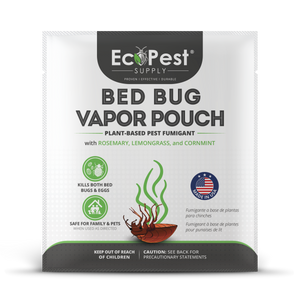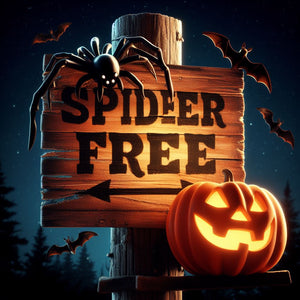
Bed bugs are one of the most persistent and annoying pests in the United States, and even though there are some amazing solutions to get rid of them on the market, people are still very concerned when they see insects crawling around.
So, if you want to know more about bed bugs, their habits, and the best ways to get rid of them, keep on reading.

What Are Bed Bugs?
Bed bugs are insects from the Cimex family and are commonly found in various parts of the world, especially the United States.
While this insect will gladly feed on any blood from mammals, they particularly love to feed on humans, during the night. This is one of the reasons why so many people wake up with small bites and itchy rashes in the morning.
Bed bugs are not the best climbers, and they are not able to fly, but on the other hand, they will use the tiny hooks on their legs to crawl fast and hide.
Different Types of Bed Bugs
There are two different types of bed bugs - common and tropical.
Both variations of bed bugs can be found in the same areas, considering they spread easily and infest even the cleanest of homes.
The two species are almost identical and most people are not able to tell the difference between them. The only thing that sets them apart is the ability to climb as tropical bed bugs are better climbers.
Common and tropical bed bugs leave itchy marks on their human hosts but apart from occasional allergic reactions they are not known to pass on any disease.

What Do Bed Bugs Look Like?
Bed bugs have small and flat torsos, brownish color, and small legs with microscopic hairs on them. They might look harmless and fragile but in reality, they are very resilient and resourceful pests that multiply fast.
The flat body of the bed bug allows them to hide even in the smallest crevices and holes in the wall, and some even occupy the mattress to be closer to the food source.
This pest will use any surface to climb into the bed or hide during the day. Their small size makes it even harder to notice with the naked eye, and it’s one of the main culprits why some infestations get out of control.
How to Tell if You Have a Bed Bug Infestation?
While bed bugs are small and hardly noticeable they leave their mark on the territory. Most of the time people suspect an infestation after waking up with flared-up and itchy bite marks, but there are a few other signs that can indicate bed bugs' presence.
Here are a few common indicators that you might have bed bugs in your home:
- Itchy bite marks
- Flared up allergies
- Brownish blood stains on the sheet
- Specific odor in the bedroom
- Rusty marks on the walls and floors
- Bed bug droppings, eggs, and dead specimens
The infestation can begin from a single female specimen, considering they can lay hundreds of eggs and make a large population fast. The bed bugs spread easily and many people bring them home on accident from hotels, used beds, and even in clothes.
Common Treatments to Get Rid of Bed Bugs?
Bed bugs might be small and resilient, but there are some amazing solutions on the market to manage and end the infestation. It’s never too early to begin your fight against the bed bugs and most experts suggest that you should look into solutions as soon as you notice any of the indicators mentioned above.
Here are some of the best treatments for bed bugs:
Interceptor Traps
High-quality plastic interceptor traps are one of the best solutions to monitor, manage and eliminate bed bugs from your home. The simple and genius design uses the knowledge that bed bugs are not the best climbers to our advantage, and captures them as they try to climb into the bed to feed.

Bed Bug Glue Traps
Considering some bed bugs might hide in the mattress it’s a good idea to set up multiple glue traps in addition to interceptors under the bed legs. With strong adhesive on these traps, you can be sure all the bugs are captured and easily eliminated from your bed.
Specialized Bed Bug Sprays
If you want to increase the efficiency of other tools it’s always wise to spray down all the surfaces with a non-toxic bed bug spray. This will eliminate bed bugs and eggs while keeping your family safe from harsh chemicals.
Laundry Detergent
To ensure all the fabrics in the home are completely bug-free you should wash the sheets, clothes, towels, and everything else with the detergent that will eliminate all the bed bugs. It’s best to use a hot cycle and treat all the washable items at once.
Protective Mattress and Pillow Covers
Once the bed bugs are gone or the number of specimens is greatly reduced you should protect your mattress and pillows from re-infestation. There are some fantastic solutions on the market that provide protection and comfort at the same time.
Diatomaceous Earth Powder
Use diatomaceous earth powder to cover all the crevices and holes in the walls, furniture, and floors where the bed bugs might hide. Because they are small and fast, they will try to escape and wait out the cleaning of your home, so be persistent and eliminate bugs in all rooms.

Final Thoughts on Bed Bugs
Bed bugs are not a pleasant sight and the itchy marks they leave can ruin your good night’s sleep. Even though they spread easily and the infestation can occur fast, there are some tried and tested ways to manage this pest and eliminate the bed bugs from your home.
With the proper tools, you can confirm the infestation and get rid of the bed bugs even before the issue becomes overwhelming to handle. Keep in mind that immediate actions have the best results and persistence is the key when dealing with bed bugs.







